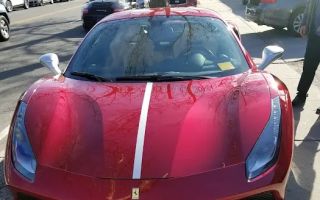How to Fix a Squeaky Car Belt: Step-by-Step Guide
There’s nothing quite as annoying as hearing a squeaky car belt. Whether you’re heading to work or just cruising around town, that persistent squeal can make your driving experience far less enjoyable. In this article, I’ll walk you through how to fix a squeaky car belt and eliminate that irritating noise for good. Trust me, once you understand the problem and how to solve it, your car’s belt will be as silent as a dream!
1. Identifying the Source of the Squeak
The first step in solving any problem is figuring out what’s causing it. A squeaky car belt can come from a variety of sources, but it’s usually the result of one of these three common issues:
- Worn or Loose Belts: Over time, belts can become loose or wear down due to constant use, exposure to heat, and friction. When this happens, they start to slip, causing that squeaky sound.
- Dirty or Contaminated Belts: If the belt has come into contact with oil, grease, or other contaminants, it can lead to a squeak. The dirtiness interferes with the smooth operation of the belt and pulleys.
- Misaligned Pulleys: If the pulleys that the belt moves over are misaligned or damaged, this can also cause a squeak. The belt will rub against the sides of the pulleys in unnatural ways, creating the irritating noise.
Once you’ve identified the cause, it’s time to move on to fixing it. Here’s how you can address each problem.
2. Tightening or Replacing Worn Belts
When your car belt is loose, it may not be running efficiently, which can lead to that squeaky sound. The first thing to check is whether the belt is properly tensioned. If the belt is loose, you can try tightening it to eliminate the squeak. Here’s how:
- Locate the Tensioner: Most modern cars have an automatic tensioner that keeps the belt tight. If your car has this feature, you may only need to adjust the tensioner. Look for the tensioner near the serpentine belt.
- Adjust the Tension: For cars without automatic tensioners, you’ll need to manually adjust the tension. Use a wrench to loosen the bolts on the belt’s pulley and slide it to tighten the belt. Be careful not to overtighten it, as this can cause other issues.
- Replace the Belt if Necessary: If the belt is excessively worn, cracked, or frayed, it’s time to replace it. Simply remove the old belt and install the new one, following the manufacturer’s guidelines.
Tip: If you’re not familiar with your car’s belt system, consult your vehicle’s owner’s manual or seek professional help to ensure the repair is done correctly.
3. Cleaning and Lubricating the Belt
If your belt has accumulated dirt or oil, it’s time to give it a good cleaning. A clean belt is far less likely to squeak and will run more smoothly. Here’s what you need to do:
- Turn Off the Engine: Always make sure your car is off before working on the belt. You don’t want the engine running while your hands are near moving parts.
- Clean the Belt: Use a rag and some soapy water to gently clean the surface of the belt. Make sure to remove any dirt, grease, or oil. You can also use a commercial belt cleaner if you have it on hand.
- Dry the Belt: After cleaning, use a dry cloth to remove excess moisture from the belt. Make sure it’s completely dry before turning the car back on.
- Lubricate if Needed: Some people recommend applying a special belt lubricant to the surface of the belt to help it move more smoothly. If you choose to do this, make sure the lubricant is designed specifically for car belts to avoid damaging them.
Once you’ve cleaned and lubricated the belt, turn the car on to check if the squeak is gone. If the squeak persists, it’s likely time to look at other solutions.
4. Fixing Misaligned Pulleys
Another common culprit behind squeaky belts is misaligned pulleys. If the pulleys that guide the belt are out of alignment, it can cause the belt to rub against them incorrectly, resulting in a squeaky noise. Here’s how to check for misalignment:
- Visually Inspect the Pulleys: Look at the pulleys closely and check if they are sitting evenly. If any pulley looks crooked or out of place, it might be misaligned.
- Check the Alignment: You can use a straightedge or laser tool to ensure the pulleys are properly aligned. If you don’t have the proper tools, take your car to a mechanic who can do this for you.
- Adjust or Replace the Pulleys: If the pulley is misaligned, you may need to adjust it. Loosen the bolts that hold it in place and realign it carefully. In some cases, you may need to replace the pulley entirely if it’s damaged or worn out.
It’s important to fix misalignment issues quickly, as it can lead to more damage to your car’s engine components if left unchecked.
5. When to Seek Professional Help
Sometimes, despite your best efforts, a squeaky belt just won’t go away. If you’ve tried tightening, cleaning, and adjusting everything but the squeak persists, it might be time to call in a professional mechanic. They can diagnose underlying issues such as pulley misalignment, belt tension problems, or even electrical problems that are affecting the serpentine belt system.
It’s always a good idea to get a second opinion if you’re unsure of the problem or lack the tools to fix it yourself. In some cases, attempting a repair without proper knowledge can lead to more costly problems down the line.
Having your car regularly inspected by a professional can also help prevent future squeaky belts and other car issues from occurring. Regular maintenance can save you time and money in the long run!
6. Preventing Future Squeaky Belts
Once you’ve fixed the squeaky belt, you probably don’t want to go through this process again. Here are a few tips to help prevent squeaky belts from happening in the future:
- Regular Maintenance: Perform regular maintenance on your car, including checking the condition of the belts and pulleys during oil changes or tune-ups.
- Avoid Oil Leaks: Ensure that no oil or other fluids leak onto the belts. If you spot a leak, have it repaired immediately to prevent further damage to the belts.
- Keep the Belts Clean: Regularly clean the belts to keep dirt, oil, and other contaminants from causing squeaks.
By following these tips, you can extend the lifespan of your car’s belts and avoid annoying squeaky noises in the future!



























